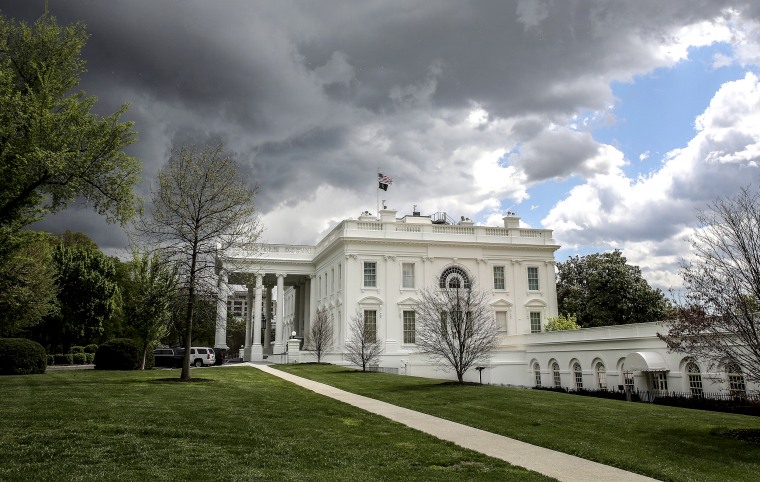A reporter asked Donald Trump on Friday whether he's concerned about the spread of the coronavirus in the White House, after some, including a presidential valet, tested positive.
"I don't worry about things," the president said, adding, "We've taken very strong precautions at the White House. But again, we're dealing with an invisible situation. Nobody knows.... All you can do is take precaution and do the best you can."
At first blush, part of that response may have seemed like a reasonably sensible position: take precautions and do your best. But that leads to an inescapable follow-up question: are White House officials actually taking sensible precautions and doing their best? There's reason for skepticism.
Two dozen House Republicans gathered with Trump and other administration officials in the State Dining Room at the White House on Friday afternoon to discuss the country's economic recovery from the pandemic. None of the attendees wore a mask.... Although attendees appeared to be sitting a few feet apart from one another around the State Dining Room, not all stayed at the recommended 6-foot distance.
The same afternoon, the president met with World War II veterans -- each of whom was quite elderly -- and Trump did not wear a mask. Also on Friday, Vice President Mike Pence, after learning about the infection of his press secretary, traveled to Iowa for some meetings with Gov. Kim Reynolds (R), faith leaders, and food-supply executives. As Bloomberg News noted, neither the governor nor the vice president wore masks during the meetings.
Over the weekend, the president promoted online a photograph from a White House meeting Trump led with Defense Secretary Mike Esper, Secretary of State Mike Pompeo, and top members of the administration's national security team. Looking at the image, not one of the officials in the room appeared to be wearing a mask, and the distance between them was far short of six feet.
This raised a variety of questions -- I found myself worrying a bit about continuity of government -- not the least of which was whether officials are actually doing "the best they can" to prevent the spread of COVID-19 inside the White House complex.
The casual indifference to common-sense precautions might be slightly easier to defend if 1600 Pennsylvania Avenue were some kind of virus-free oasis, untouched by the pandemic. But that's plainly not the case: a presidential valet and the vice president's press secretary tested positive last week.
White House senior adviser Kevin Hassett conceded to CBS News yesterday, "It is scary to go to work."
It's tough to blame Hassett for feeling anxious. Not only does the White House appear increasingly vulnerable, but he works at an institution led by a boss who believes masks send "the wrong message" and has a problem with "the whole concept" of coronavirus testing. Donald Trump lacks a plan to deal with the national crisis and lacks a plan to keep the virus out of the presidential mansion.
I'd be scared to step foot in the cramped West Wing, too.
Hassett is hardly alone. A Washington Post report added over the weekend that there was "palpable" nervousness and concern among White House staffers who are no longer sure whether they should continue going to work -- even as the president pushes Americans nationwide to return to their workplaces.
And therein lies the broader point: as Trump tries to assure the public that we're on the road to normalcy, he works in a White House complex where testing is common. But some people have contracted the virus anyway. Testing very likely helped prevent a more widespread problem, but the infections still happened.
Now imagine the challenges confronting every other workplace in the United States -- the ones Trump is eager to see open despite the risks. Shouldn't recent developments in the White House help make clear to the president and his team that the public has reason to be apprehensive about heading back to work in places that have vastly less testing and tracing?
Or as a New York Times report put it over the weekend, "If it is so hard to maintain a healthy environment at 1600 Pennsylvania Avenue, the most famous office address in the world, where staff members are tested regularly, some as often as every day, then how can businesses across the country without anywhere near as much access to the same resources establish a safe space for their workers?"
